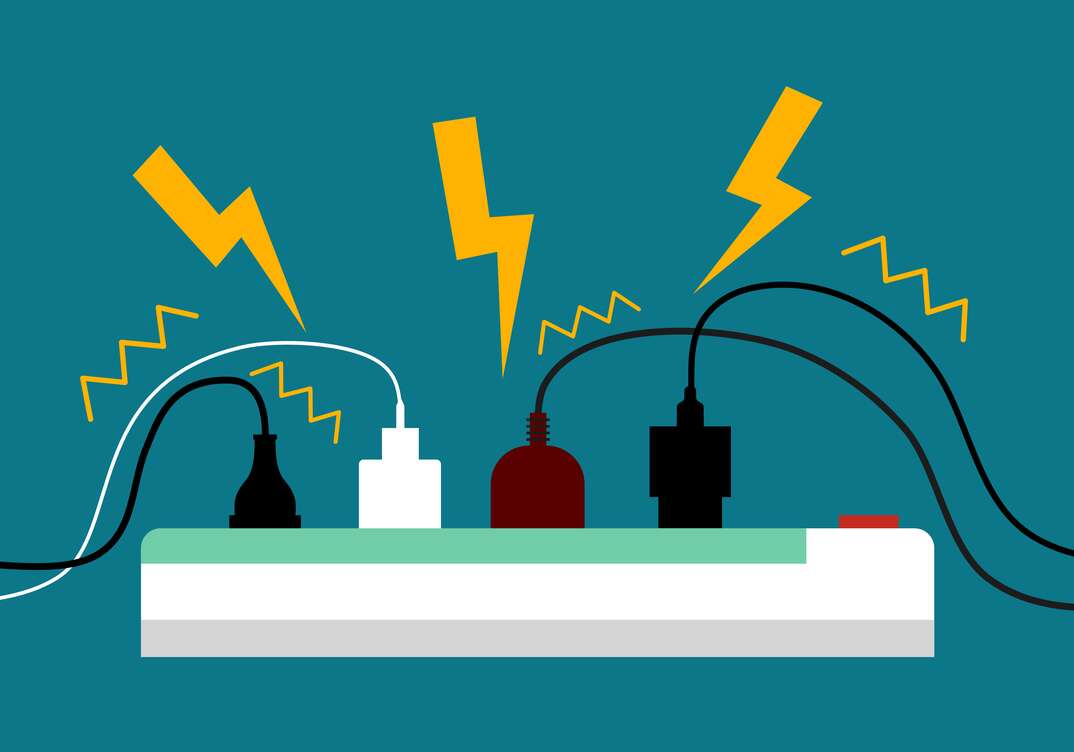- AppliancesElectriciansHVACLandscapingLocksmithPest ControlPlumbingRenovationRoofingT V RepairAll Home Improvement
- Car AccidentClass ActionCorporate LawCriminal DefenseDivorce LawEmployment LawFamily LawFinancial LawLegal AidMedical Injury LawyersMedical MalpracticeReal Estate LawWater Fire RestorationAll Legal
- InvestmentRetirementAll Finance
- Animal InsuranceAutoGeneral InsuranceHealth PolicyHome RentersAll Insurance
- DentalHealth SpecialistsAll Medical
- Animal CareVeterinaryAll Pets
- Auto GlassTowingAll Automotive
How Do You Know a Circuit Is Overloaded?

Electricity in our homes — it’s a definite must-have. When the electricity is out, it can be crippling to our everyday tasks. Electrical circuits are designed to safely handle a limited amount of electricity flowing through them.
But when too many devices draw power from the same circuit, it can become dangerously overloaded. An overloaded circuit is hazardous, so you need to address it promptly to prevent potential risks, such as an electrical fire.
An electrical circuit overload happens when the total electrical load connected to the circuit exceeds the maximum amperage it can handle safely. The wire size and the circuit breaker or fuse protecting that branch circuit determine the maximum current rating.
Each electrical circuit in your home is rated for a specific maximum current load, typically 15 or 20 amps. Going over that rated load puts excessive demand on the wires. This can create heat buildup that may lead to arcing and melted insulation. If combustible materials are nearby, it may also cause a fire.
The amperage rating specifies how much current a circuit can continuously carry without overheating. For example, the typical 15-amp circuit in homes can safely power up to 1,800 watts of electrical devices simultaneously under normal conditions. But introducing too many energy-hungry appliances onto that same circuit will push it over its rated limit.
Signs a Circuit Is Overloaded
There are several ways to tell if a circuit in your home is becoming overloaded and needs attention:
- Circuit breakers trip or fuses blow repeatedly.
- Outlets or switches feel warm or hot to the touch.
- Lights dim, or electrical motors lose power when other devices on the same circuit are turned on.
- You smell a faint burning odor from outlets or switches.
- You hear crackling, sizzling or buzzing noises from the outlets.
If you notice any of these signs, it may be that too many electrical loads are connected to that branch circuit, causing an unsafe wiring condition. Even one high-wattage appliance, such as a space heater, can overload an older home's outdated wiring systems.
The solution is straightforward: Reduce the electric load on the overloaded circuit by unplugging some devices and lights. Strategically move power-hungry appliances, such as portable heaters, air conditioners and refrigerators, to different circuits if possible.
As a general safety guideline, never draw more than 1,500 watts on a 15-amp circuit or 2,400 watts on a 20-amp circuit. Adding up the wattage ratings listed on devices and lighting plugged into the same outlets can reveal if you're likely exceeding those limits for that circuit.
Extension cords should only be used temporarily, as they're prone to overloading themselves if used beyond their modest rated capacity for an extended period. Also, relying on extension cords as permanent solutions increases electrical fire risks, so consider adding more electrical sockets in your home if this situation relates to you.
More Related Articles
- How Do I Tell If an Electrical Issue Is Serious?
- Can One Bad Outlet Affect Others?
- How to Reset a GFCI Outlet
- What’s in My Electrician’s Van?
- 7 Ways to Save on Your Electric Bill
What Are the Dangers of an Overloaded Circuit?
According to the National Fire Protection Association, between 2015 and 2019, electrical distribution system fires resulting from circuit overloads caused an estimated 51 civilian deaths, 140 civilian injuries and $1.3 billion in direct property damage. Many of these tragedies could have been avoided with just a little know-how from some of those involved.
The primary hazard is the risk of an electrical fire originating from the excess heat buildup in the wiring. This heat can cause arcing and degradation of the wire's protective insulation over time.
Even without a fire breaking out, sustained overloaded conditions can gradually compromise the integrity of wiring insulation until arcing faults and short circuits develop between conductors. These arcing faults can release extreme heat and potentially ignite flammable materials nearby.
So, it’s wise to learn the warning signs and make decisions that limit your electrical demands, as this will allow you to use electricity much more safely in your home. Upgrading outdated electrical panels, adding new dedicated circuits for high-consumption devices and following sensible precautions help ensure the flow of electricity remains manageable without overloading any of your home's circuitry.
Listen for those warning signals, such as tripped breakers or buzzing outlets, and you'll be able to recognize and respond properly to an overloaded circuit situation before it escalates into a potential fire hazard.
Elocal Editorial Content is for educational and entertainment purposes only. Editorial Content should not be used as a substitute for advice from a licensed professional in your state reviewing your issue. Systems, equipment, issues and circumstances vary. Follow the manufacturer's safety precautions. The opinions, beliefs and viewpoints expressed by the eLocal Editorial Team and other third-party content providers do not necessarily reflect the opinions, beliefs and viewpoints of eLocal or its affiliate companies. Use of the Blog is subject to the
Website Terms and Conditions.The eLocal Editorial Team operates independently of eLocal USA's marketing and sales decisions.



